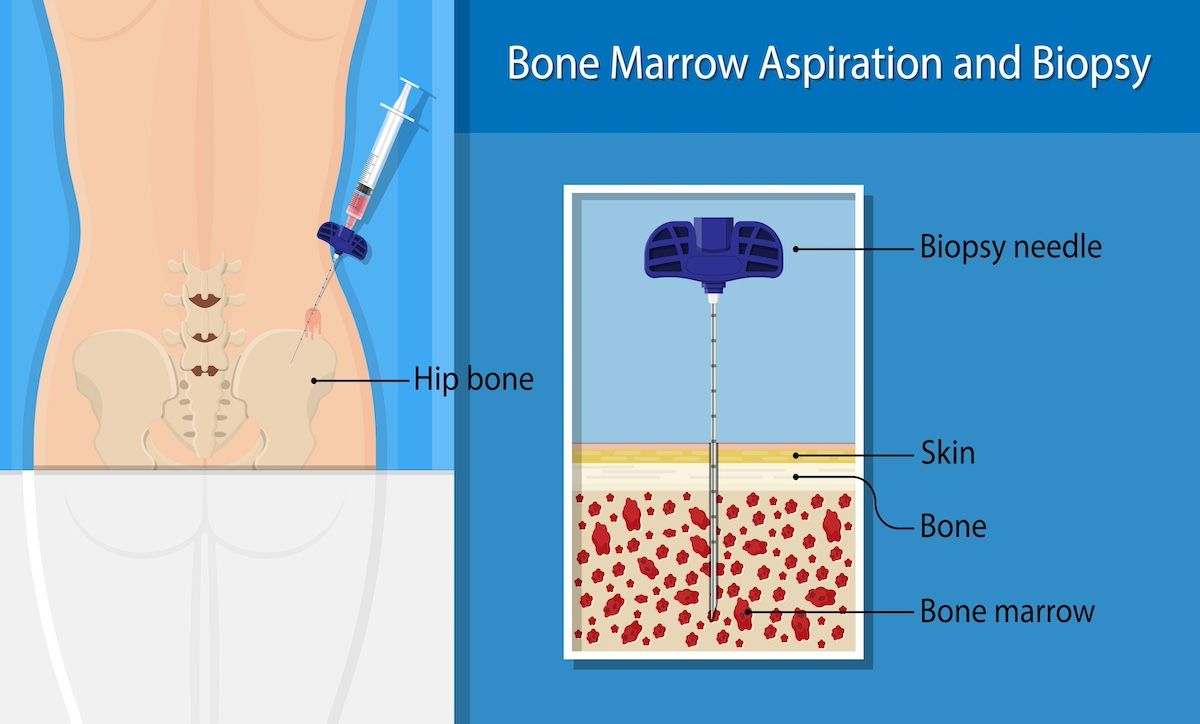News
Article
Atypical Marker Expression in T-Cell Acute Lymphoblastic Leukemia/Lymphoma
Author(s):
Two unique case reports highlight the diagnostic challenges and critical importance of comprehensive immunophenotyping in cases of T-cell acute lymphoblastic leukemia/lymphoma that present without typical immaturity markers but with rare γδ T-cell receptor expression.
In the latest issue of Cureus, researchers from Albany Medical College and Washington University in St. Louis present 2 cases of T-cell acute lymphoblastic leukemia/lymphoma (T-ALL) that highlight significant diagnostic challenges due to the absence of conventional immaturity markers and the presence of γδ T-cell receptor expression.1
T-ALL is a rare form of leukemia, constituting 12% to 15% of pediatric ALL cases.2 The disease is typically identified by immature markers such as terminal deoxynucleotidyl transferase (TdT), which is expressed in 90% to 95% of lymphoblastic lymphomas.3 The standard diagnostic process relies heavily on flow cytometry analysis to detect these markers. However, the absence of TdT and other markers, such as CD34, can lead to diagnostic difficulties, particularly when γδ T-cell receptor expression is present, which is unusual for T-ALL, occurring in approximately 9% of cases.
The researchers note that the importance of these case studies is to highlight that "When a lack of common first-line immaturity markers is encountered in combination with gamma/delta T-cell receptor expression, a misdiagnosis of mature gamma-delta T-cell leukemia/lymphoma could be rendered." Two cases of T-ALL are discussed, in which the absence of common flow cytometry immaturity markers and positive γδ receptor expression occurred. The cases involve young patients whose initial screenings did not reveal the typical immaturity markers expected in T-ALL.
In both cases, patients presented with lymphadenopathy and hepatosplenomegaly on scans and exhibited positivity for Pan T-cell markers. Various T-cell abnormalities, including bright CD7 and dim CD5 and double-negativity for CD4 and CD8, suggest T-cell clonality was present. In addition, both cases were largely negative for CD34, HLA-DR, and TdT on flow cytometry. The immunohistochemical staining profile of the first case showed variably positive TdT immunostaining and had bright CD1a and CD99 positivity, contributing to the diagnosis of T-ALL. Immunohistochemical staining was not available for case 2. Survival in both patients was approximately 1 year post diagnosis.
T-cell acute lymphoblastic leukemia/lymphoma is a rare occurrence, accounting for between 12% and 15% of all pediatric ALL cases | Image Credit: Pepermpron-stock.adobe.com

The first case involved an 18-year-old male patient who was initially diagnosed with incidental lymphadenopathy post tooth extraction. He presented with frequent episodes of epistaxis and bruising that gradually became more frequent. Initial complete blood counts (CBC) showed a white blood cell count of 33.8 x103/μl with an abnormal white blood cells differential count of 63%. The patient was treated per Children's Oncology Group Protocol AALL0434.4 Bone marrow aspiration after the first treatment contained a small amount of residual disease. After a few treatment cycles, the patient refused further chemotherapy treatment.
The second case, a 19-year-old female patient, presented with severe symptoms, including a 2-day history of nausea and vomiting and a week-long loss of appetite and occasional diarrhea. Her initial CBC revealed a white cell count of 890,000 x 103/μl, with 92% abnormal white blood cells. Her treatment involved several protocols, including high-dose chemotherapy and stem cell transplantation. She relapsed 3 months after a stem cell transplant.
"These cases underscore the diagnostic complexities associated with T-ALL, particularly when immaturity markers exhibit atypical expression patterns and rare T-cell receptor expression is involved," the authors noted. “The correlation of clinical presentation with morphological, immunophenotypic, and genetic findings is essential for an accurate diagnosis.”
References
1. Faraz M, Parmigiani A, Monkash N, et al. T-cell acute lymphoblastic leukemia/lymphoma (T-ALL) with negative screening immaturity markers and gamma-delta receptor expression. Cureus. 2024;16(4):e57399. doi:10.7759/cureus.57399
2. Raetz EA, Teachey DT. T-cell acute lymphoblastic leukemia. Hematology Am Soc Hematol Educ Program. 2016;2016:580-588. doi:10.1182/asheducation-2016.1.580
3. Hassan M, Abdullah HMA, Wahid A, Qamar MA. Terminal deoxynucleotidyl transferase (TdT)-negative T-cell lymphoblastic lymphoma with loss of the T-cell lineage-specific marker CD3 at relapse: a rare entity with an aggressive outcome. BMJ Case Rep. 2018;2018:bcr-2018224570. doi:10.1136/bcr-2018-224570
4. Dunsmore KP, Winter SS, Devidas M, et al. Children’s Oncology Group AALL0434: a phase III randomized clinical trial testing nelarabine in newly diagnosed T-cell acute lymphoblastic leukemia. J Clin Oncol. 2020;38(32):3282-3293. doi:10.1200/JCO.20.00256





